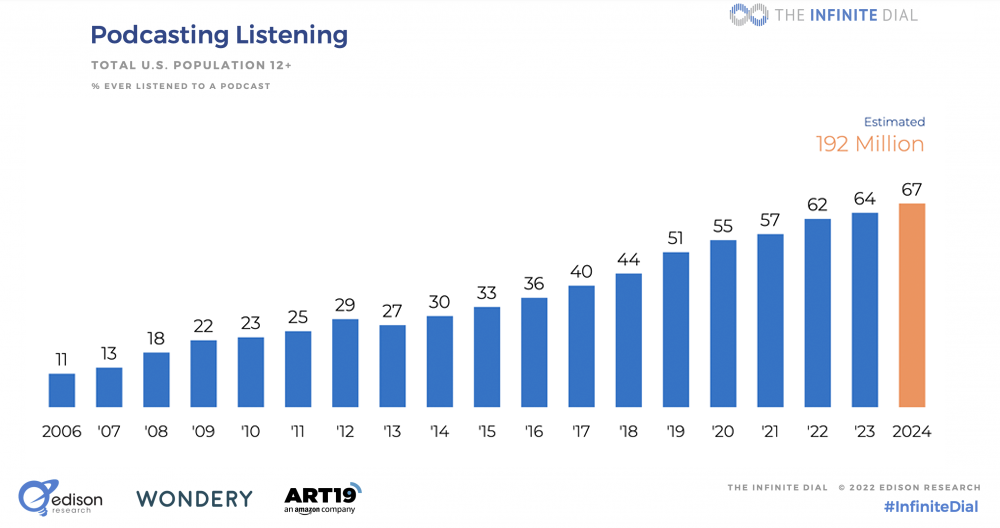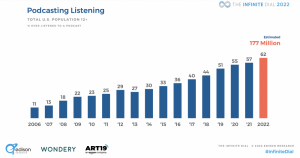
Overestimating Podcasting, Underestimating Podcasting: Ouch! How Both Can Hurt
If Roy Amara’s first rule of technology holds true, most commercial podcasters will overestimate the value of podcasting in the short term and underestimate the value of a well-developed podcasting program in the long term.
The Pain of Overestimating Podcasting
The value, appeal, and promise of podcasting have finally reached companies serving the education community — we say finally because some education podcasts are well over a decade old. We started producing podcasts for the National Association for the Education of Young Children back in 2008. By 2009, the National Association of Elementary School Principals, the National Association of Secondary School Principals, and the American Association of School Administrators had joined our client list. The National Head Start Association, the National Association of Child Care Professionals, and the National Association of School Nurses would also become part of the BAM Radio Network that year. Collectively this group of early adopters helped create a nationwide audience of educators who are interested in podcasts and listen weekly.
Fast forward to 2021, and we find ourselves serving a community of educators who are downloading over two million BRN podcast episodes a month. Into this well-established ecosystem, education companies like Microsoft Education and Defined Learning launched company podcasts to secure a share of ear. Microsoft’s SuperSpeaks podcast just started its third season. Microsoft’s second podcast, Leading Innovation, is starting its second season this fall.
By far, the biggest challenge you’ll face when setting up a company podcast is managing expectations. Many expect their podcast to attract thousands of listeners immediately. The fact that podcast audiences take several episodes to begin to grow too often causes companies to abandon their budding podcast prematurely.
What successful podcasters understand is that podcasting is a relational versus transactional medium. Like every deep, loyal relationship you have, the commitment didn’t happen overnight. All relationships are built on trust and trusted audience relationships develop from seeing what a host and a podcast deliver over time.
The Pain of Underestimating Podcasting
On the flip side of the coin is the pain of dropping out of podcasting, then later reading a glowing post about a competitor whose podcast has become the highly respected, trusted, go-to source of information and support for customers in your market segment.
Your competitor invested in building those personal relationships — episode by episode — cultivated a loyal audience that buys their products and enthusiastically tells their peers — and your customers — how great your competitor is. Ouch!
Marketing science tells us that a company will rise to become the leading voice in every business category in the years ahead. Our hope is to help several companies achieve that position.
If the history of podcasting is a predictor of its future, it is likely that many company podcasts will lose their first mover advantage by abandoning the program because it failed to generate a return on investment overnight — rookie mistake and one of the deadliest sins.

The graph from Edison Research reveals a pivotal point every company starting a podcast needs to know to avoid overestimating or underestimating how your company podcast will perform. Podcast audiences have grown from a meager 13 million a year to over 177 million since we produced our first episode in 2007. Our audience, market position and client list were not built overnight — all were built over time.
The bottom line: Effective Commercial podcasting is a marathon, not a sprint.


Leave a Reply
You must be logged in to post a comment.